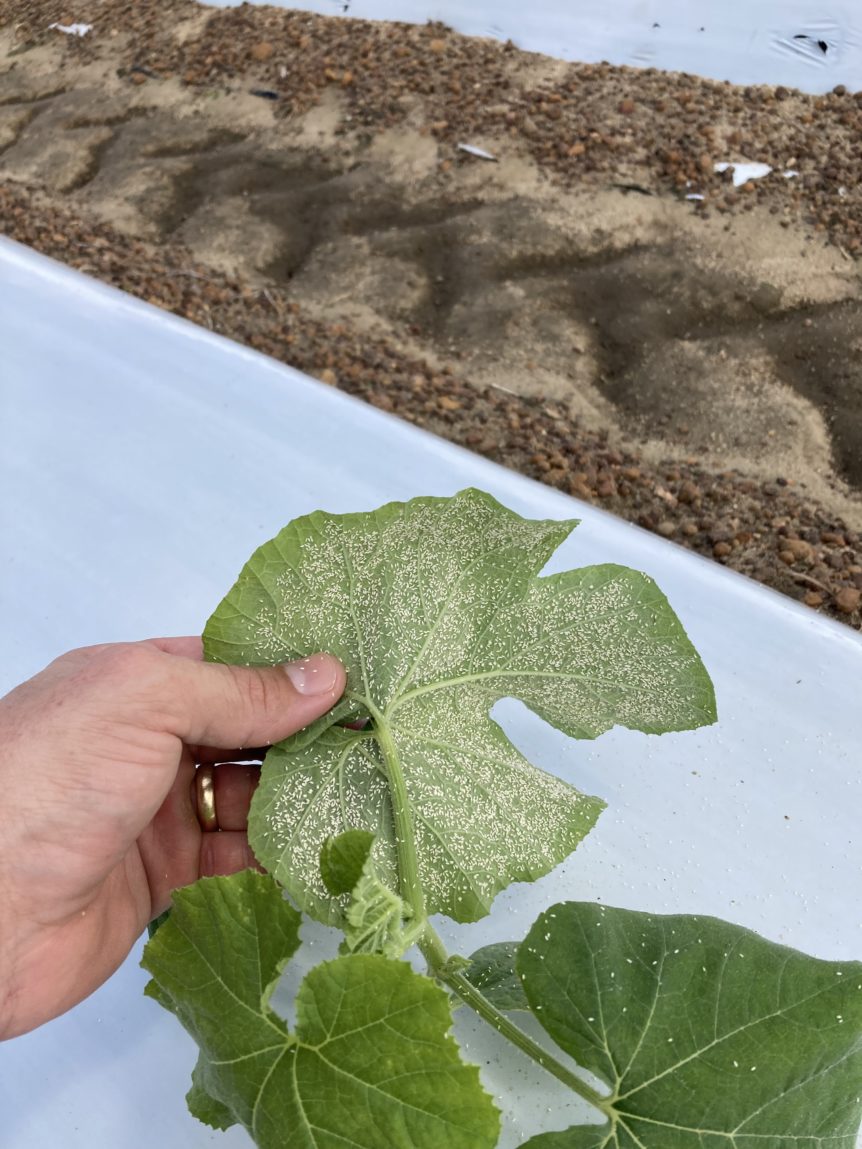
By Clint Thompson
Whitefly infestations are normally a problem for Georgia’s fall vegetable production. While they were noticeable this fall season, they weren’t as high as in recent years, says Stormy Sparks, University of Georgia Extension vegetable entomologist.
“I don’t think the populations were as high. We always get high populations late in the year, but they didn’t show up early. They showed up a little late,” Sparks said. “They got high but weren’t ridiculously high. We had some virus, but I haven’t seen virus in crops that were abnormally high by any means. The only place where I’ve seen severe virus was here on the station.
“They didn’t explode like they’re capable of doing. We did have them in peppers, and that’s happened for the last two or three years; I mean significant populations in some peppers. They didn’t use to build up populations in peppers. We’re seeing some host shift there.”
Whitefly infestations are significant because of their potential impact throughout the year. They typically migrate from winter vegetables to spring vegetables to agronomic crops, like cotton, to fall vegetables and back to winter vegetables. The buildup of whiteflies is concerning since their feeding injuries in vegetables can lead to virus transmission, including cucurbit leaf crumple virus, cucurbit yellow stunting disorder virus, cucurbit chlorotic yellow virus, squash vein yellowing virus and tomato yellow leaf curl virus.










